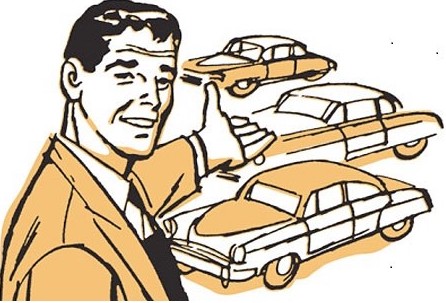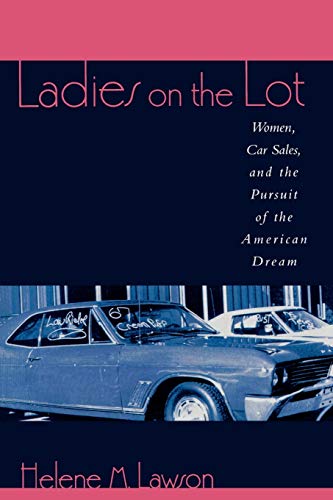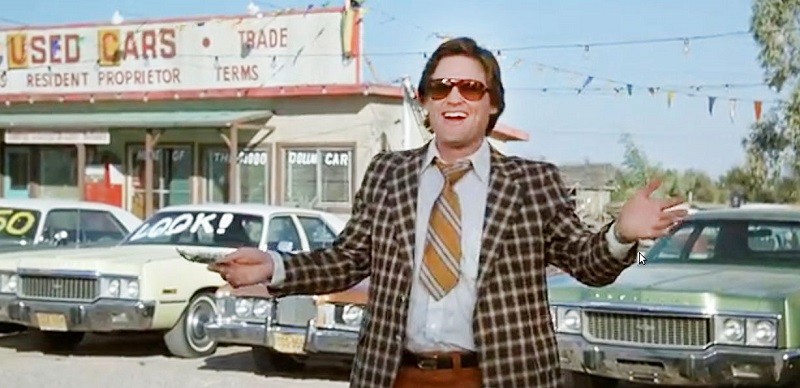
A recent article in Autoblog reported on a salary survey conducted by Automotive News regarding the average pay of car dealership employees. The headline – “What Car Dealership Employees Earn: Lots of Money” suggests that working in auto sales is a lucrative career. The article bolsters this claim with the assertion, “multiple respondents […] submitted comments noting they entered the business for the money.” While Autoblog notes that women in the profession make considerably less than male counterparts, the disparity is attributed to a problem with the survey’s methodology rather than any gender inequity within the system.

Jalopnik covered the news with a slightly different take. The article put the significance of the $74,000 pay gap into context by comparing it to the $74,580 income of an average American household. The author notes that the salary gap percentage – 66 cents to every dollar earned by a male dealer – is 17 percent less than that of women in other jobs. The article reveals that when asked, only 6.3 percent of men in dealerships surveyed believe the industry “is not welcoming to women” compared to nearly one third of female respondents. As successful car dealers put in an average of 55 hour weeks, asserts Jalopnik, “the world of car dealerships is truly the exemplary old boys’ club, rewarding long hours and grueling working conditions.” The article cites the response of a 25-year veteran in the business; as she confessed, “I have never been so disrespected and unappreciated in my life. I am mansplained to constantly by customers and coworkers.” Rather than dismiss the $74,000 pay gap as the product of questionable research methods, Jalopnik uncovers responses from the study that provide insight into conditions that influence the incredulous gender pay inequality.

In 2000, sociologist Helene Lawson authored Ladies on the Lot, a comprehensive study of 49 women who worked in car sales from 1987-1999. Although this project was conducted over a quarter-century ago, the conditions under which the women worked, and the obstacles they faced in the field, are eerily similar to those referenced in the recent Jalopnik piece. As Lawson argues, women entered the field for the same reasons as men – they were attracted to the work for the possibility of a high income; they sought car sales as a way to achieve the “American Dream.” However, once on the job the women were subject to sexual harassment, isolation from male colleagues, criticism for perceived “inadequacy,” exclusion from professional training, lack of mentoring, and admonishment for “feminine” style selling techniques rather than the male intimidation practices preferred by male colleagues. As the author notes, the expectation that they would work 12 hour days and 60 hour weeks was problematic, particularly for women with children who required child care. Male managers often positioned female dealers in the back of the sales floor with lower priced vehicles, which negatively affected commissions. Working in car sales, the author asserts, “involves long hours, high pressure, questionable ethics, no salary guarantee, and little job security” (Sacks 780). As Lawson reports, while female dealers who adapted more aggressive, ‘fast-talking’ selling techniques and sacrificed family and social life for the job were happy with the money they earned, the overwhelming majority of women in car sales wound up “chasing an elusive dream of autonomy and economic sufficiency that was just out of their grasp” (Mahar).

Despite the claim of “faulty survey methodology,” the revelation that women in automotive sales earn one third less than male peers indicates conditions that exist within the car dealership culture are disadvantageous if not inhospitable to women for a variety of reasons. While women have made inroads in many aspects of the automobile industry over the past 25 years, today’s $74,000 pay gap within the car dealership collective suggests that gender equity has a long way to go. Or as Jalopnik’s Bradley Brownell blatantly concludes, “the American dealership network system is broken and awful.”
Brownell, Bradley. “The Gender Pay Gap At Car Dealerships Is Way Worse Than The National Average.” jalopnik.com 22 Jan 2024.
Huetter, John. “Auto Retail Professionals Make Great Money — But Men Make an Average of $74,300 More.” autonews.com 20 Jan 2024.
Lawson, Helene M. Ladies on the Lot: Women, Car Sales, and the Pursuit of the American Dream. Roman & Littlefield, 2000.
Mahar, Karen Ward. “An Unbelievably Bad Deal! Women Sales Agents and Car Dealerships in America.” H-Net Reviews, 2001.
Sacks, Nancy Lee. Review of Ladies on the Lot by Helene M. in Gender and Society (Oct 2021) 779-781.
Williams, Stephen. “What Car Dealership Employees Earn: Lots of Money.” autoblog.com 23 Jan 2024.